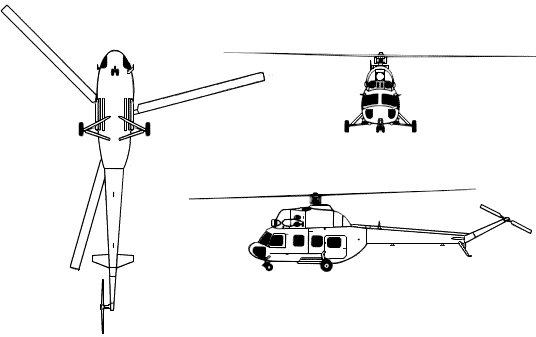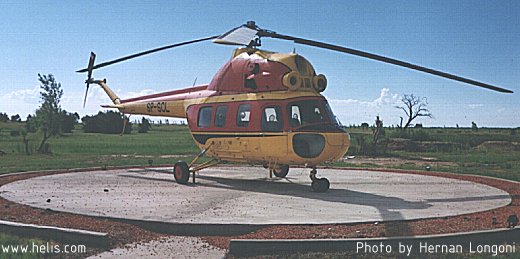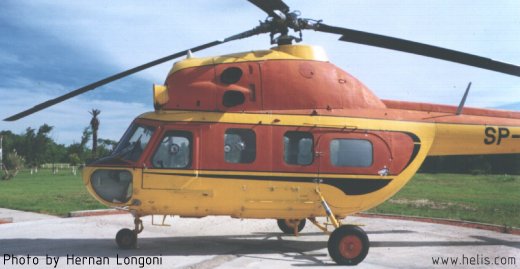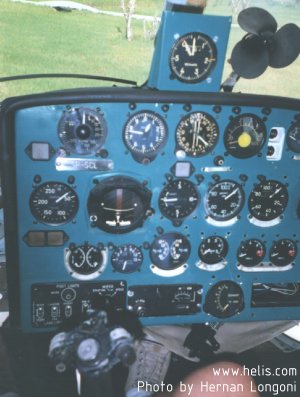|
Mil Mi-2 Hoplite
The Mi-2,
NATO code name 'Hoplite', was developed in the early 1960's by the Mil
bureau as a turbine-powered version of the Mi-1 Hare. The recently
development of the shaft-turbine engine revolutionized the design of the
helicopter. The twin turbines develop 40% more power than the Mi-1's
piston engine for barely half the dry weight, more than doubling the
payload.
The fuselage of the Mi-2 greatly differs from that of the Mi-1, carrying
the engines above the cabin but the overall dimensions of the two models
remain closely similar.
The Mi-2 was flown in 1962, but never put into production in the Soviet
Union. Instead responsibility for the type was assigned to WSK-Swidnik
(now PZL) to Poland as part of a eastern Europe Comecon rationalization
programme, becoming the only Soviet-designed helicopter to be built solely
outside the Soviet Union.
Production in Poland started in 1965 and in the 90s, PZL factory
introduces a new variant: W-3.

The following Mi-2 is preserved at
Museo Aeronautico "Estancia Santa Romana" in San Luis, Argentina



8 passenger utility helicopter
Rotor diameter: 14.56 m
Length: 12 m
Height: 3.75 m
Disc area: 160 m2
Weights: empty: 2370 kgs, Max: 3700 Kgs, slung load: 800 kgs.
Engine: 2 Isotov GTD-350 of 431 shp
Speed: Max: 210 km/h
Range: 340 km
Service Ceiling: 4000 m
|



